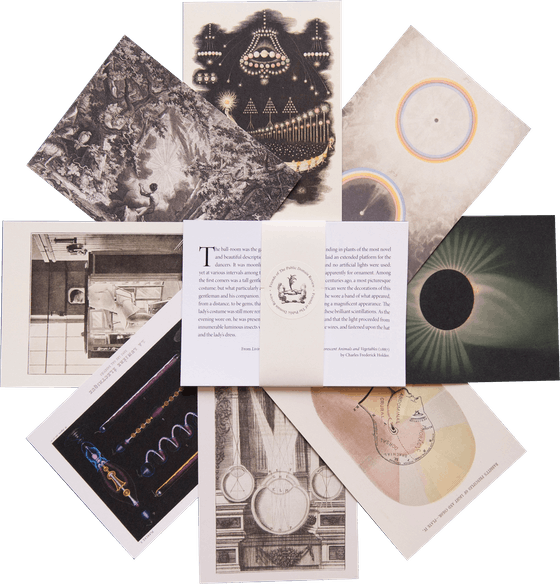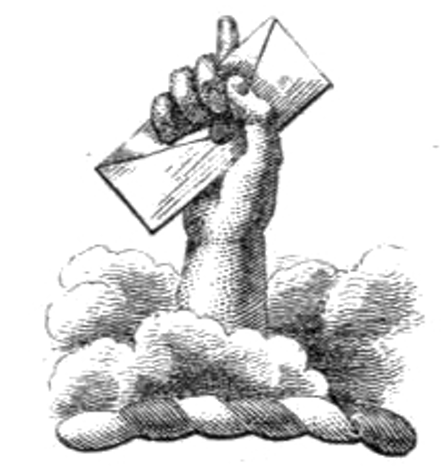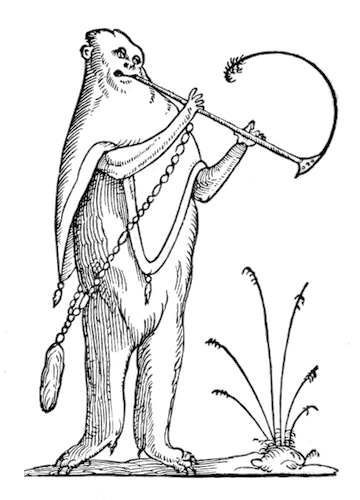
Sheet Mewsic: Moritz von Schwind’s Katzensymphonie (1868)
Cats are not the most innately musical creatures. They cannot sing like the thrush or drone with the whales. But their mews and paws have been long incorporated into other kinds of improvisations. Consider the sadistic sixteenth-century cat piano or stories about Alessandro Scarlatti’s black cat, Pulcinella, who inspired her master’s Cat Fugue in G minor during a bout of zoomies across his piano: “‘Bless the cat!’, he cried. ‘She has given me the very theme I have been groping after.’” Cats playing acoustic instruments has been a persistent theme of visual art and cinema. From the 1700 Lombard School orchestra through Fred Astaire’s performance in Let’s Dance (1950) — where he personifies a cat scampering on the ivories (only to reveal that the piano is actually full of terrified kittens) — to contemporary viral videos of feline glissandi, musical cats are perhaps better suited for the eyes than the ears. In Moritz von Schwind’s Katzensymphonie (1868), they climb, tumble, and nap across the lines of stave and clef, producing a sonata for violins in 3/4 and 12/8 time. There’s a German joke here, for Katzenmusik is a term used to describe unpleasant noise, and Richard Wagner’s Kunstwerk der Zukunft (“Artwork of the Future”) seems to have been the target of Schwind’s score.
The Austrian painter created his Katzensymphonie as a gift to celebrate violinist Joseph Joachim’s recent appointment as director of Berlin’s Hochschule für Musik. Schwind and Joachim were both members of Die Schwarzen Katzen, a society — whose name derived from a legend that tells of black cats in wine cellars seeking out the most valuable barrels on which to nap — founded by the contralto Amalie Joachim with Bernhard and Luise Scholz on a sunny afternoon in 1862 while drinking an 1857 bottle of Rauenthaler. As Bernhard would later recall, it only admitted friends of friends “who, through ‘cat-like behavior’, made themselves worthy of such noble wine”. Johannes Brahms, Julius Otto Grimm, and Clara Schumann were eventually accepted into the society, whose constitution included the clause: “Uncat-like speech or actions shall be duly punished before the Chapter, and any member who opposes this shall be expelled from the order.”
Schwind was evidently proud of his composition, as he also sent a photograph of the sheet music to poet and pastor Edward Mörike on January 19, 1869, with an accompanying letter that cheekily ribs Joachim for his inability to play the Wagnerian Katzensymphonie.
I have become a musician, a musician of the future in the second higher degree. Away with the old, stiff, dry staff! Outdated, outdated, outdated stuff — I need a new, spiritualized, lively means of expression for my new, unimagined thoughts — whether it's sounds, images or the devil knows what, it doesn't matter — I have achieved the unbelievable. The enclosed sonata, dedicated to Mr Joachim, is a telling proof. He confesses that he is incapable of playing it — this wizard on the violin!
For a time, Schwind’s Katzensymphonie eclipsed the environ of its genesis, and Scholz was forced to write to early Brahms biographer Max Kalbeck twice, pleading with him to correct the claim that Die Schwarzen Katzen society arose in response to Schwind’s symphony and not vice versa. (Kalbeck went so far as to playfully suggest that Montmartre’s famed cabaret Le Chat Noir, whose iconic poster by Théophile Steinlen still dominates Paris souvenir shops, was also indebted to the Austrian artist.) The image circulated rather far afield: it was revised and redrawn for an issue of the American children’s magazine Wide Awake in 1884 and also appears in an 1895 issue of Britain’s Woman at Home during an interview between Joachim and Baroness von Zedlitz. Weirdly, Hermann Rorschach, whose famous psychological test attributes meaning to inkblots, also cribbed the Katzensymphonie. As Damion Searls discusses, his Scaphusia scrapbook contains “klexy cats frolicking up and down the staff in place of notes”.
Enjoyed this piece? We need your help to keep publishing.
The PDR is a non-profit project kept alive by reader donations – no ads, no paywalls, just the generosity of our community. It’s a really exciting model, but we need your help to keep it thriving. Visit our support page to become a Friend and receive our themed postcard packs. Or give a one-off donation. Already a supporter? A huge thank you for making all this possible.
Apr 8, 2025







